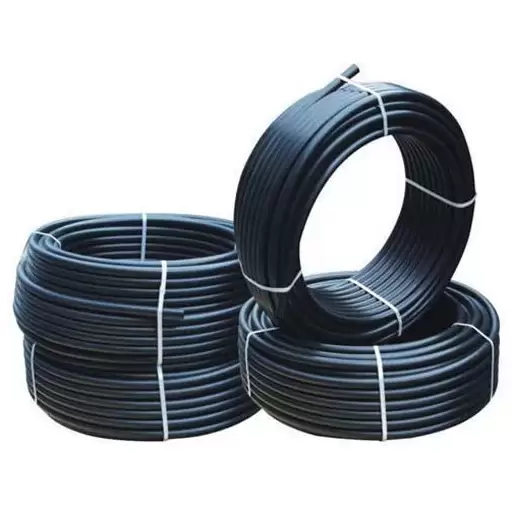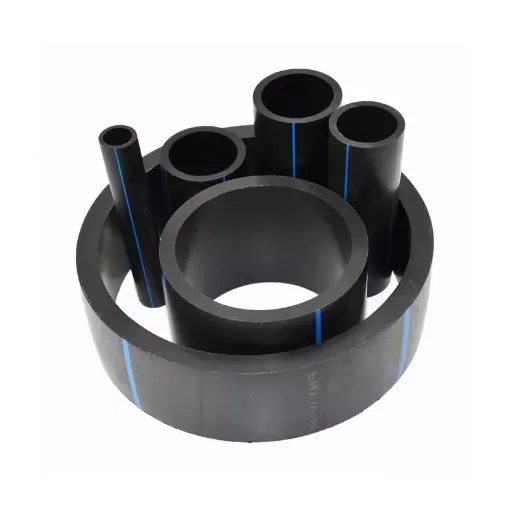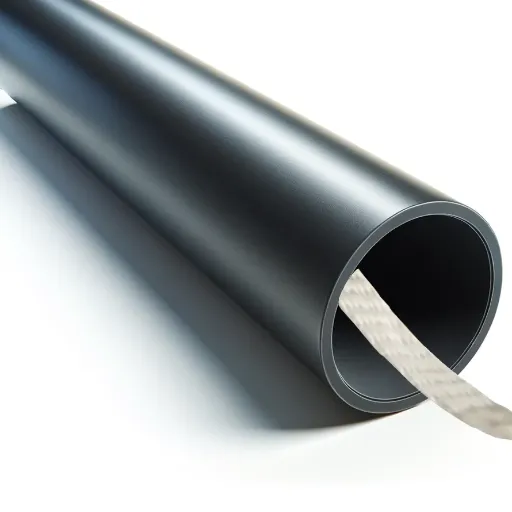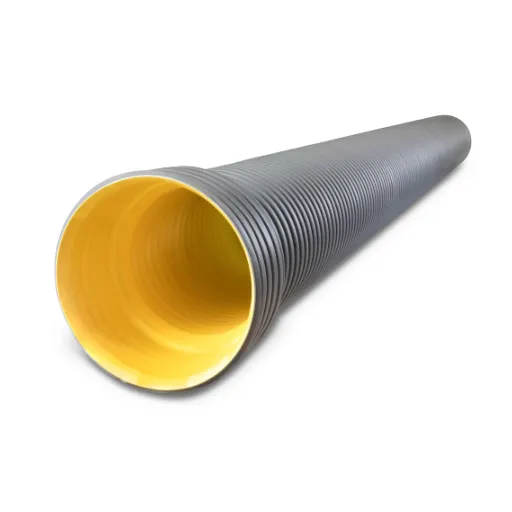High-density polyethylene (HDPE) geothermal pipes have emerged as a pivotal solution in revolutionizing HVAC systems, offering unparalleled efficiency, durability, and environmental benefits. Designed to harness the earth’s stable thermal properties, these pipes facilitate geothermal heat exchange that significantly reduces energy consumption and operational costs. As the demand for sustainable and energy-efficient HVAC solutions grows, understanding the role of HDPE geothermal pipes becomes essential for industry professionals, engineers, and building managers. This article will explore the unique properties of HDPE, how these characteristics optimize geothermal systems, and why this technology is becoming a critical component of modern HVAC designs. Whether you are seeking to enhance system performance or reduce your carbon footprint, this comprehensive overview will provide vital insights into how HDPE geothermal pipes can meet the evolving demands of today’s energy landscape.
What Is a Geothermal Pipe and How Does It Work?
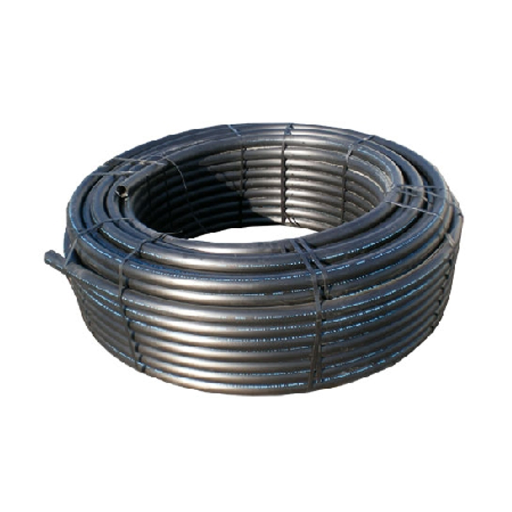
Understanding Geothermal Energy
Geothermal energy is a renewable energy source that harnesses heat that is trapped beneath the surface of the Earth. This heat is generated by the molten core of the planet and radioactive decay of some minerals within the Earth’s crust. Geothermal systems harness this resource to generate steady and reliable energy for heating and cooling.
Geothermal pipes form a primary setup of geothermal systems and are usually laid in ground loops. These systems transfer heat from the ground to the building and vice versa through a closed-loop system. During winter, the fluid takes heat from the ground temperature, which remains stable, and leads it into the building, which then gets concentrated and distributed through the HVAC systems. During summer, the heat flows in the opposite direction; that is, heat from the building gets conducted to the cooler ground, where it gets dissipated away. This uninterrupted heat exchange serves to keep the temperature control at a high level of efficiency through all seasons.
The viability of this transfer of energy greatly depends on the material makeup of the geothermal pipes. High-Density Polyethylene (HDPE) pipes are one of the foremost materials suitable for this application because of their thermal conductivity, high corrosion resistance, and very long service life. Hence, by fully assisting an efficient heat exchange without undue loss of energy, geothermal systems working with HDPE piping promise an excellent green option that is also a cost-effective means to meet modern heating and cooling requirements.
The Role of HDPE in Geothermal Systems
High-Density Polyethylene (HDPE) occupies a very important place in geothermal systems thanks to its superior thermal character and good durability. HDPE maintains thermal conductivity so that heat can transfer efficiently between the ground and the heat pump. This minimizes losses insofar as the geothermal system is operating better than systems made of any other material.
The next advantage of HDPE is that it resists corrosion and is chemically inactive. Underground, varying soil compositions and moisture contents may set up conditions that break down other materials. HDPE stands clear, and with its strong build, can resist such conditions for decades, thus minimizing or even removing pipe replacement and repair. This improves the installation reliability of the geothermal system over time.
Also, HDPE offers good flexibility for installation, which makes it greatly desirable for geothermal applications. The pipes bend and conform to the complex layout of a closed-loop system, ensuring speedy and cheap installation. In addition to these features, HDPE grades are environmentally friendly due to their long lifecycle-based operations. Summarizing all these features, HDPE pipes remain one of the most important technologies in efficient, low-carbon geothermal heating and cooling systems.
Comparing HDPE Pipe to Traditional Pipe Materials
HDPE pipes, thus, are preferred to others, i.e., PVC, concrete, steel, fiberglass, and PEX, in terms of durability, resistance to corrosion, flexibility, lightweight nature, and leak-proof joints.
|
Aspect |
HDPE |
PVC |
Concrete |
Steel |
Fiberglass |
PEX |
|---|---|---|---|---|---|---|
|
Strength |
High |
Moderate |
High |
High |
High |
Moderate |
|
Adaptability |
High |
Low |
Low |
Low |
Moderate |
High |
|
Rustproof |
Excellent |
Moderate |
Low |
Low |
Moderate |
High |
|
Mass |
Lightweight |
Lightweight |
Heavy |
Heavy |
Moderate |
Moderate |
|
Setup Ease |
Easy |
Easy |
Difficult |
Difficult |
Moderate |
Easy |
|
Longevity |
50-100 yrs |
20-50 yrs |
50-100 yrs |
40-50 yrs |
50+ yrs |
20-30 yrs |
|
Seal Quality |
Excellent |
Moderate |
Low |
Low |
High |
Moderate |
|
Expense |
Moderate |
Low |
High |
High |
High |
Moderate |
|
Sun Durability |
Moderate |
Low |
High |
High |
High |
Low |
|
Eco-Friendliness |
Low |
High |
High |
High |
Low |
Moderate |
Why Choose HDPE Geothermal Pipes?
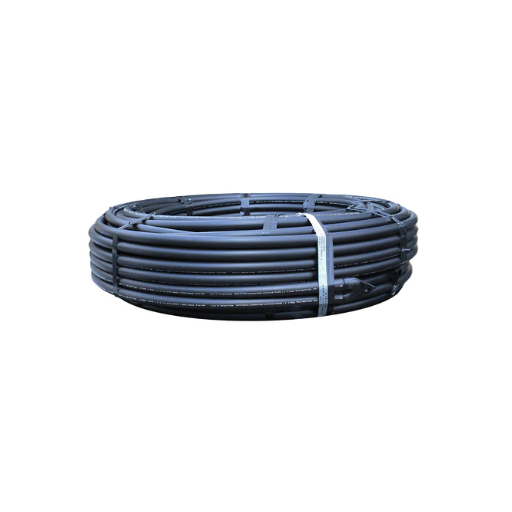
Benefits of Using HDPE in Geothermal Applications
Some of the benefits that HDPE pipes extend to geothermal systems have seen them preferred over traditional materials. Enough information and technical studies are available to substantiate the claim that HDPE is a safe and efficient material for geothermal purposes. Here are the top five advantages of HDPE in geothermal applications:
- Thermal Conductivity: The thermal conductivity property of HDPE pipes remains consistent, such that heat transfer along geothermal systems is effective. Studies prove that HDPE holds a thermal conductivity from 0.45 to 0.52 BTU/hr-ft-F, thus fitting energy requirements for low-carbon temperature regulation systems.
- Longevity and Durability: The life expectancy of the HDPE pipes under normal operational conditions stands more than 50-100 years, for their nature is to resist environmental stress cracking and chemical corrosion. HDPE does not corrode or deteriorate in alternate atmospheres where metals will be affected by moisture, chemicals, or temperature fluctuations; hence, it lessens the cost of maintenance over a given period.
- Flexibility and High Strength-to-Weight Ratio: The flexible nature of HDPE allows faster installation and provides significantly minimized risk of damage during handling. It has a high strength-to-weight ratio, which helps lower the costs of transportation and deployment compared to rigid materials like steel or PVC.
- Leak-Free Joints: Monolithic joints formed with HDPE by employing fusion welding techniques, either butt fusion or electrofusion, are fully sealed against leakage, whereas traditional pipes often do leak from joint failure. Laboratory test results confirm negligible leakage for HDPE systems, far beyond legacy systems.
- Environmental Sustainability: HDPE is highly recyclable and can be reused brand new with little loss of structural integrity. The relatively low carbon footprint during production, combined with its utmost efficient energy utilization during system operation, makes HDPE a sustainable choice for geothermal applications. According to comparative lifecycle analyses, there’s an option of reducing global warming effects up to 30% by opting for HDPE covers instead of conventional pipe materials.
Summarized explanations strongly justify how HDPE pipes have forever retained their dominance as the leading material applied in geothermal heating and cooling.
Durability and Corrosion Resistance of HDPE Pipes
High-density polyethylene (HDPE) pipes are an indication of strength and corrosion resistance, making them the pipeline of choice for various industrial and environmental applications, including geothermal systems. Rust breed and chemical degradation would set into the metallic alternatives given time, and HDPE pipes fare far better in moist, chemical-bearing, or other extreme temperature environments.
The molecular structure of HDPE lends it tensile strength while maintaining flexibility, which helps the pipe resist external loads without cracking or breaking. Moreover, HDPE is chemically inert against a very large universe of chemicals, including acids, alkalis, and organic solvents. Industry data suggest that the life span of HDPE pipe is over 50 years under typical operating conditions, thereby minimizing the cost of long-term maintenance and enhancing sustainability. This also implies enhanced resistance to corrosive environments having high salinity levels, wherein most other piping materials get compromised due to rapid corrosion.
In addition to possessing an excellent abrasion-resistant characteristic, the HDPE pipes have been proven to outperform many other materials commonly used in industrial pipelines in maintaining their structural integrity when subjected to high-friction or high-flow conditions. The performance of HDPE pipes makes it a fitting solution wherever heavy-duty materials are required to operate for a longer duration under adverse conditions.
Cost-effectiveness and Efficiency of HDPE
High-density polyethylene (HDPE) pipes are more cost-effective and operationally effective, thereby making them the preferred utility in many industrial and infrastructural applications. A major determinant of cost efficiency is the lesser amount spent on materials and manufacturing processes of these pipes as compared to traditional materials like steel or concrete. HDPE is made of thermoplastic resins; hence, it is cheaper and more scalable. On another note, the pipes are light in weight; hence, this reduces the cost of transportation, handling, and even installation when compared to heavier materials. This entire scenario paints a picture of a material with lower costs of transportation and raw materials, giving them a better choice in cases where cost is of paramount importance, especially when working on large projects.
Talking about efficiency, HDPE pipes have great flow efficiency and smooth internal surfaces that reduce frictional head losses. Reduced energy consumption for pumping, therefore, cuts down on operational costs over the years. Flexibility, on the other hand, fastens positioning on terrains where rigid materials require extensive terrain preparation or additional fittings, hence promoting time and cost gains. HDPE pipes support fusion welding techniques to create smooth welds, which eliminates the potential for leakage critical factor for long-term maintenance costs. The pipes are also resistant to scaling, corrosion, and environmental stress cracking, and hence, reduce the frequency of repairs, further benefiting operators in terms of costs and time.
While comparing the life cycle cost, HDPE pipes do well because of their durability and lower maintenance. Studies have shown that depending on the operating condition, the service life of an HDPE pipeline can go beyond fifty years, which then makes this pipe a long-term investment. Their resistance to UV rays and chemicals ensures that there will be the least occurrence of material fatigue, which promotes even longer life and the operational stability of these pipes. HDPE pipes are, therefore, considered economically viable because of their low acquisition cost, operating cost, and service life, making them integral to contemporary infrastructure projects for municipal water supply, industrial processing, and agricultural irrigation.
How Are Plastic Pipes Installed in Geothermal Systems?
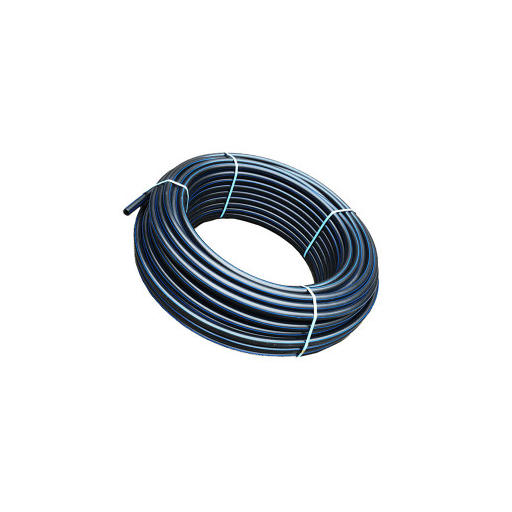
Step-by-Step Installation Process
- Site Evaluation and System Design: Before installation, a site evaluation is performed to determine the geothermal system’s depth, loop type, and energy requirements. Soil conductivity tests and land evaluations take place to determine the appropriateness of horizontal or vertical loop installations.
- Trench Excavation or Borehole Drilling: Trenches are excavated or boreholes drilled, depending on the geothermal loop configuration (horizontal or vertical). Horizontal systems require wide trenches that are 4 to 6 feet deep, while vertical systems require that boreholes be drilled from 150 to 400 feet in depth.
- Pipe Preparation and Setting in Place: HDPE pipes are deployed, often referred to as those with the best thermal conductivity and durability. Horizontal loop pipes are laid either in compact coil configurations or straight runs, while in vertical systems, they are placed into boreholes and grouted for an improved thermal transfer.
- Fusion and Pressure Testing: Heat fusion methods are performed to join individual pipe segments to ensure leak-free and durable pipe connections. Pressure testing of the fused piping system is then undertaken to detect potential leaks and ascertain the installation’s integrity.
- Backfilling and System Integration: With pipes deployed, backfilling of the trench or boreholes is done using thermally conductive materials such as bentonite grout. Minimizing air voids during backfilling optimizes thermal exchange efficiency. Subsequently, the system is connected to the geothermal heat pump, where energy transfer takes place via the circulating fluid.
- System Calibration and Testing: The final system is calibrated to optimize heat exchange efficiency. Fluid flow rates, system pressure, and temperature differentials are extensively monitored to guarantee peak performance and conformance to design criteria.
By following this well-planned installation sequence, the reliability and efficiency of geothermal systems are ensured, providing a sustainable energy option for residential, industrial, and commercial applications.
Common Challenges in HDPE Geothermal Pipe Installation
The installation of HDPE geothermal pipes is a very technical job with a lot of challenges encountered in the field, demanding good planning and execution to maintain system efficiency over time. Among the common issues encountered are pipe fusions done poorly, where the actual joining procedure must create a perfect union, so there are no leaks and the fusion lasts for the long haul. Any irregular or variable temperatures that occur during the joining process, or misalignment of pipes before final heating, will compromise joint integrity. Hence, the temperature controls of the fusing equipment must be highly precise, and the operator experienced.
Channeling through the soil and geophysical conditions is another area of challenge. The variability of soil composition, thermal conductivity, and moisture content enormously influences the heat exchange effectiveness of the system. Therefore, adequate site assessment and thermal response testing shall be conducted to develop a loop field design that is suitable so that ground heat exchange will be in conformity with energy requirements.
Trenching and drilling also pose logistical and environmental problems. Trenches and boreholes need to be carefully excavated to prevent pipe damage and to ensure exact pipe placement. The other environmental aspects to keep in sight during installation include disturbance to the soil, possibility of contamination of groundwater, to name some, with a view to preventing adverse ecological impacts in the long run.
Lastly, the potential for pressure imbalance throughout the system must be controlled by means of hydraulic design and rigorous testing measures. Imbalanced flow rates lead to inefficiencies with parts of the system overcooling and other parts overheating. Such issues can be addressed via advanced system modeling, accounting for CFD simulations to achieve the most optimal flow distribution and pressure balance.
It is with these challenges that a mixture of technical competency, exact engineering, and industry best practices can realize HDPE geothermal pipe installations for sustainability and energy performance.
Tips for Ensuring Proper Fusion and Joint Connections
Fusion and jointing must be secure and durable to ensure long-term system integrity and efficiency in HDPE geothermal piping. The key recommendations for successful outputs are:
- Material Compatibility: Verify that all HDPE components are purchased from a reputable manufacturer and that they conform to ASTM or ISO standards applicable to geothermal applications. This ensures material compatibility between the equipment and the pipes and reduces the incidence of joint failures.
- Pre-Fusion Preparation: Thoroughly inspect pipe ends and fittings to ensure they do not present any contamination, damage, or irregularities. The surfaces to be fused shall be so clean and dry that they feel no oil, dirt, or dust. In some cases, use approved cleaning agents.
- Proper Equipment Calibration: Make sure the fusion equipment is properly calibrated and inspected to operate according to the manufacturer’s instructions. Temperature settings shall correspond to the HDPE materials being joined.
- Adherence to Heating and Cooling Times: Observe strict heating, joining, and cooling times based on industrial fusion procedures or manuals issued by pipe manufacturers. Any deviation from the recommended time may impair the actual strength and integrity of the joint.
- Environmental Considerations: Execute operation in an environment free of wind, moisture, or drastic temperature fluctuations. Any change in the external environment might affect the heat balance, leading to weak connections.
- Non-Destructive Testing (NDT): Incorporate any desirable non-destructive testing techniques that serve to assure the joint quality during and after the installation. These may serve as visual or ultrasonic inspections.
- Documentation and Record-Keeping: Maintain record logs concerning all fusion evaluations, complete with the list of equipment calibration and operator certificates. The traceability of this kind of record creates a crucial standpoint in the framework of quality assurance and future maintenance.
By carrying out such practices, the structural integrity of the HDPE geothermal system is improved to technically compliant levels, thus reducing the chances that these systems will fail in due time.
What Are the Advantages of Using HDPE in Geothermal Applications?
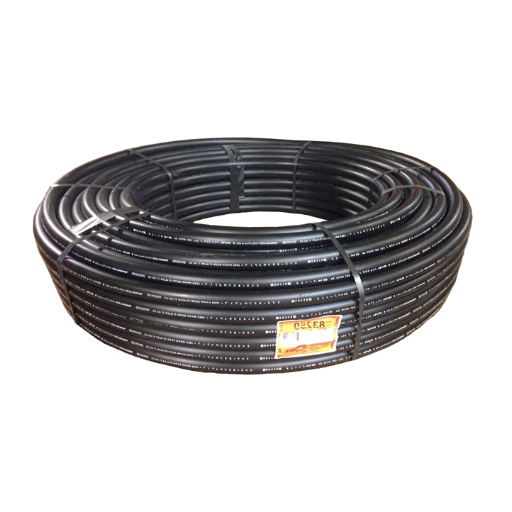
Thermal and Mechanical Properties of HDPE
High-density polyethylene pipes have been preferred for geothermal applications for their superior thermal and mechanical properties. With a typical range of thermal conductivity between 0.42 and 0.52 W/m·K, HDPE pipes facilitate the efficient transfer of heat, which is very essential for geothermal energy system optimization. The thermal expansion coefficient is rather low, usually between 1.8 x 10^-4 and 2.0 x 10^-4/°C, which means the pipe undergoes minimal change in length when subjected to temperature variations.
HDPE pipes offer sufficient strength in terms of tensile force, in the range of 3,000 psi to 4,000 psi (20 to 27 MPa), so they are capable of enduring the rigid pressure encountered under a geothermal system underground. Also, because of its ductility and flexibility, HDPE will resist stresses emanating from earth movements or freeze-thaw cycles. The elongation at break for HDPE is generally more than 500 percent, which signifies its ability to take up strain so that it does not snap under pressure. All these qualities make HDPE very suitable for applications demanding a high degree of durability and low maintenance for a long duration.
The additional factor of resisting chemical corrosion and environmental stress CTing undoubtedly implies the dependability of HDPE in geothermal scenarios where it is exposed to moisture and fluctuating temperatures. The combination of these properties enhances operational performance and yield cost-effectiveness, thereby reducing repairs or pipe replacement undertaken through the lifespan of the system.
Environmental Benefits of High-Density Polyethylene
From its unique properties and sustainability profile, HDPE offers far more environmental benefits. Hence, it is a preferred choice whenever applications require some consideration for the environment. The following list elucidates some of its important environmental advantages:
- Recyclability: HDPE has a very high rate of recyclability, and most old products are reincarnated into new materials after end-use. Industry statistics cite that about 30 percent of HDPE produced worldwide is recycled, thereby reducing the amount of raw material needed and its extraction.
- Energy Efficiency in Production: Lesser energy is required for manufacturing HDPE in comparison to any fabricated conventional materials like metals or cement. Studies suggest that HDPE production offered about 35 percent energy savings when fabricated for an application equivalent to steel.
- Lesser Carbon Footprint: Based on lifecycle carbon footprint assessment, HDPE performs relatively better. Its average carbon emission data stands at one-and-a-half kilogram CO2 per kilogram of material produced, which is far less than alternative materials such as PVC or aluminum.
- Long Lifecycle and Minimal Environmental Impact: HDPE’s durability and maintenance require infrequent replacements or repairs, therefore limiting waste and consumption of resources. Typically, HDPE system solutions remain functional for over 50 years in highly demanding applications.
- Resistance to Leaching and Environmental Contamination: HDPE does not leach harmful chemicals into the environment under normal conditions and is therefore safe to use in potable water systems, landfill liners, and other environmentally sensitive applications all over the world. The fact that the polymer is inert ensures that it meets all stringent environmental safety standards set worldwide.
All these factors make HDPE an eco-friendly and sustainable choice in changes of different industries.
Long-Term Performance and Reliability of HDPE
High-Density Polyethylene (HDPE) is recognized everywhere for its utmost durability and reliability in tough applications, life performance, with unchanged qualities. HDPE products stand the test of time when subjected to varying environmental-operational conditions due to having higher resistance against stress cracking and chemical attacks. Conventional research reveals a service life of more than 100 years for HDPE pipes in water and wastewater systems when properly installed and operated.
One important attribute for the reliability of HDPE is its low permeability to moisture absorption and chemical seepage. In landfill liner and geomembrane applications, this is a must for containment and environmental protection. Advances in polymer technology have also resulted in improved UV resistance of HDPE, where additives such as carbon black are used. This has kept it suitable for outdoor applications where extended exposure implies minimal degradation.
Suitable for vigorous temperature extremes without compromising on performance, HDPE is an otherwise perfect material. In addition, the mechanical behavior is maintained under both below-zero and high-temperature conditions, which benefits regions with variable climates. Some reports show lower maintenance and repair costs for decades from infrastructure applications, thus translating into large savings during the life span of the material.
Long-term performance and serviceability of HDPE are founded on the sturdy physical and chemical properties, modern manufacturing advances in formulation, and the proven applications of the material in industrial, environmental, and construction types.
Who Are the Leading Manufacturers of HDPE Geothermal Pipes?
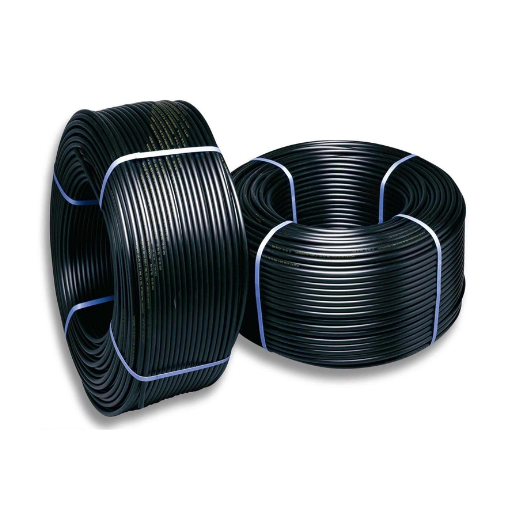
Top HDPE Pipe Manufacturers in the Industry
When analyzing the top manufacturers of HDPE geothermal pipes, it is vital to include companies that hold applications of excellence, creativity, and reliability. Sino Pipe Factory is one of the topmost producers in the industry, playing a vital role at the forefront of this industry since it has applied modern production technologies, used advanced materials, and has been excelled in sustainability. Sino Pipe Factory (https://sinopipefactory.com/) makes sure every product is given in its best state, HDPE geothermal pipes that can be used extensively considering harsh applications of geothermal purposes, time sustainability, and cost effectiveness. Such products have qualities including but not limited to: good longevity, environmentally stressed, and well compatible with various types of geothermal infrastructures.
Another excellent capability of Sino Pipe Factory is its personalized solutions for the specific requirements of projects. Structures in such terrains, high-pressure systems, or stringent environmental conditions all fall within the experiences of the engineering team at Sino Pipe Factory, who also guarantee an optimal design and operational functionality. The pipes are subjected to frequent testing and considered under international standards, hence chosen by engineers and project managers globally. Their strict requirements on accuracy and reliability put their HDPE geothermal pipes right in the heart of environmentally and industrially oriented projects.
Furthermore, the company values customer satisfaction by providing strong technical support and guarantees timely delivery under good price conditions. Unlike other companies in this field, their uniqueness comes shining through, an insight into geothermal applications and the challenges endured in carrying them out. Sino Pipe Factory is leading innovation under a tightly knit framework of quality control in HDPE geothermal pipe making, thus setting itself as a name synonymous with excellence in this industry.
Quality Standards and Certifications for Geothermal Pipes
Meeting rigorous quality standards ensures the reliability and performance of geothermal pipes in various environments. Polyester geothermal pipes are generally manufactured to the quality standards like ISO 9001 for quality management systems or ISO 14001 for environmental management, thus ensuring consistency, sustainability, and meeting the strict demands in geothermal applications. Other standards, such as ISO 4427 and ASTM D3035, deal with the HDPE piping system’s material and dimensional characteristics, specifying that such piping systems are suitable for high-pressure and thermal performance requirements of demanding geothermal systems.
Certifications offered by testing authorities are fundamental in assessing product quality and durability. Agencies such as DVGW in Germany and NSF International in the USA together offer independent inspection and certification of geothermal pipes for international standards of safety and functionality. In such attestations, factors of chemical resistance, thermal stability, and tensile strength have been ranked among the grounds for certification, since these are crucial for the pipes to exist under extreme subsurface conditions.
Eventually, with the progress of quality testing methods, i.e., rapid crack propagation and slow crack growth analysis, CD-lab manufacturers attempt to guarantee the permanence of HDPE geothermal systems for numerous years of operation. The abiding by such quality, therefore, does not merely assure quality in respect to the legal but builds trust in clients pursuing solutions that are sufficiently durable and outstanding for sustainable geothermal infrastructures.
References
Frequently Asked Questions (FAQ)
Q: What are the benefits of using high-density polyethylene (HDPE) geothermal pipes in HVAC systems?
A: HDPE geothermal pipes offer several benefits, including high temperature resistance, low thermal conductivity, and excellent pressure ratings. They provide a durable and efficient solution for heat pump systems and geothermal energy applications due to their ability to minimize heat loss and withstand continuous use.
Q: How does HDPE tubing compare to copper and metal pipes in geothermal applications?
A: HDPE tubing is preferred over copper and metal pipes in geothermal applications because it is corrosion-resistant, has low thermal conductivity, and is flexible, making it easier to install. Unlike metal pipes, HDPE can be buried underground without the risk of rust or degradation.
Q: What pressure ratings are available for HDPE geothermal pipes?
A: HDPE geothermal pipes come in various pressure ratings, typically ranging from PE 3408 to PE 4710. These ratings ensure that the pipes can handle the pressure demands of geothermal systems while maintaining their structural integrity.
Q: Can HDPE pipes be used in sanitary HVAC systems?
A: Yes, HDPE pipes are suitable for sanitary HVAC systems. They are made from ethylene, which is non-toxic and safe for use in systems where maintaining sanitary conditions is particularly important.
Q: Why is low thermal conductivity in HDPE pipes particularly important for geothermal systems?
A: Low thermal conductivity is crucial because it minimizes heat loss during the transfer of geothermal energy. This efficiency ensures that the heat exchanger operates effectively, optimizing the system’s ability to provide heating and cooling.
Q: Are HDPE geothermal pipes UV resistant?
A: While HDPE pipes are durable, they are not inherently UV resistant. It is advised to protect them from direct sunlight exposure or to utilize UV-stabilized variants if they will be exposed to UV rays for extended periods.
Q: How does the continuous tubing design benefit geothermal pipe systems?
A: Continuous tubing design allows for longer pipe runs with fewer connections, reducing the risk of leaks and enhancing the efficiency and reliability of the geothermal system.
Q: What is the significance of the C448 standard for HDPE geothermal pipes?
A: The C448 standard outlines the specifications and testing requirements for geothermal pipe and fittings, ensuring that products meet the necessary quality and performance criteria for effective use in geothermal systems.
Q: How are HDPE pipes utilized in heat pump systems?
A: In heat pump systems, HDPE pipes are buried underground to facilitate the exchange of heat between the earth and the system. This process harnesses geothermal energy to provide heating and cooling to buildings efficiently.
Q: What precautions should be taken when burying HDPE geothermal pipes?
A: When burying HDPE geothermal pipes, it is essential to ensure proper trenching and backfilling to avoid damage. The pipes should also be installed below the frost line to prevent freezing and maintain system efficiency.



